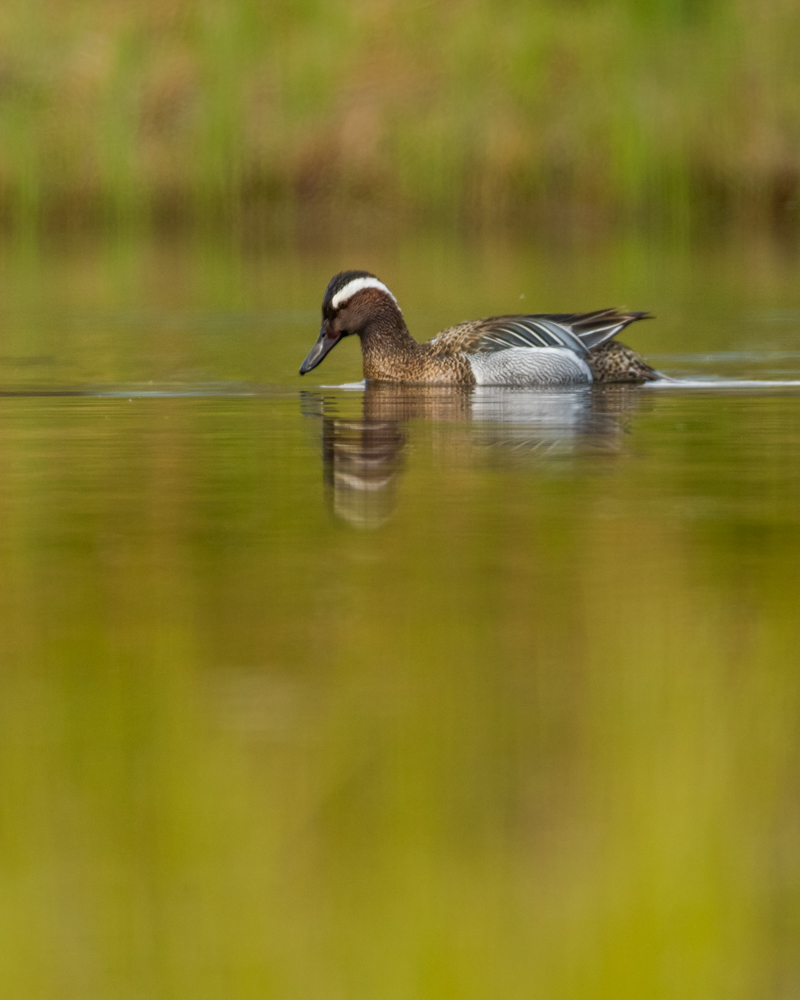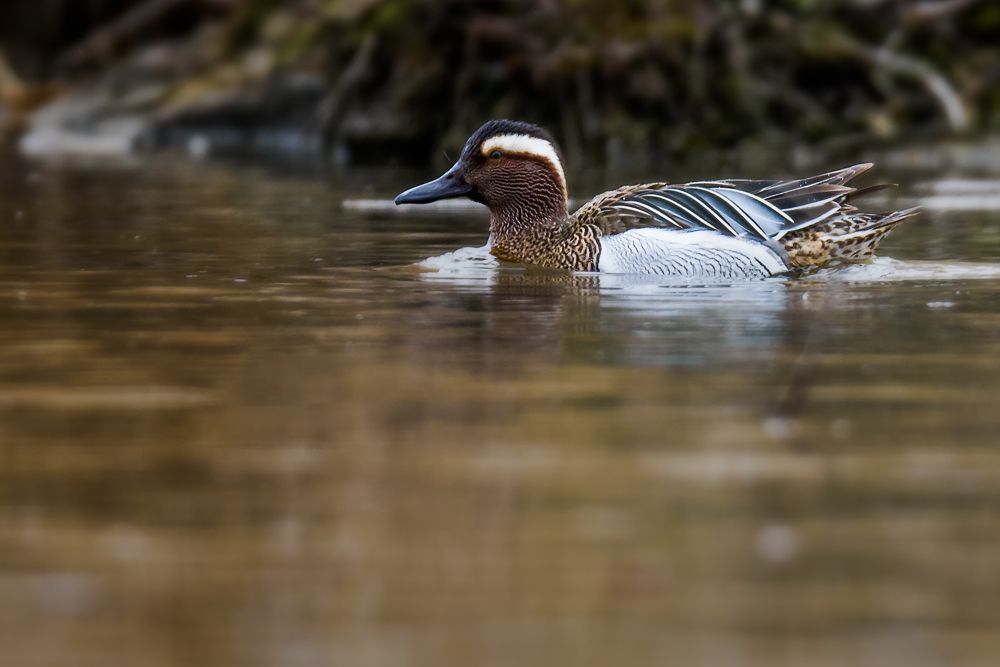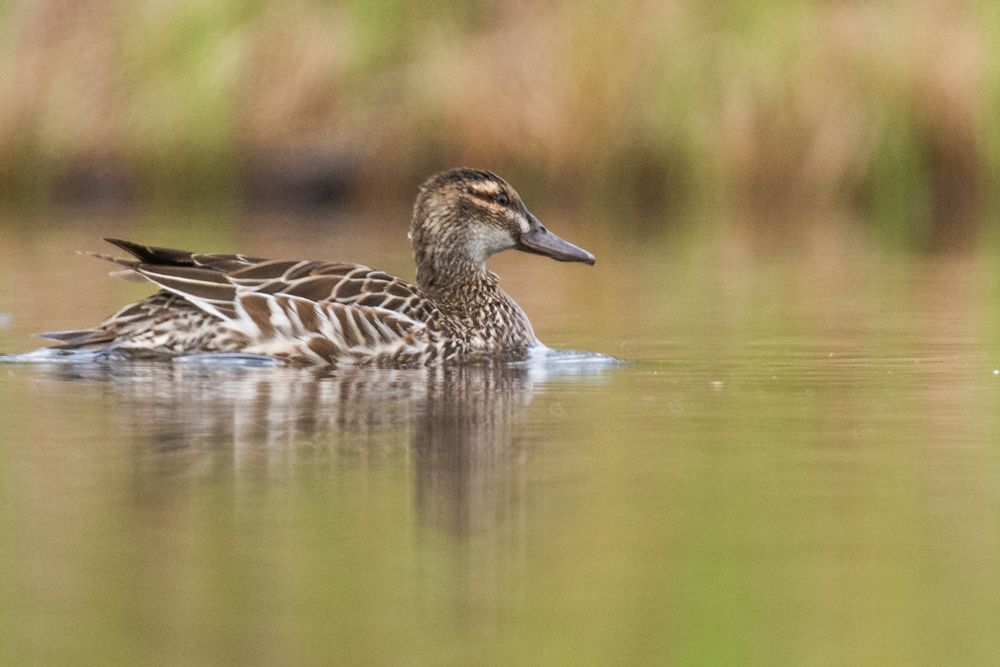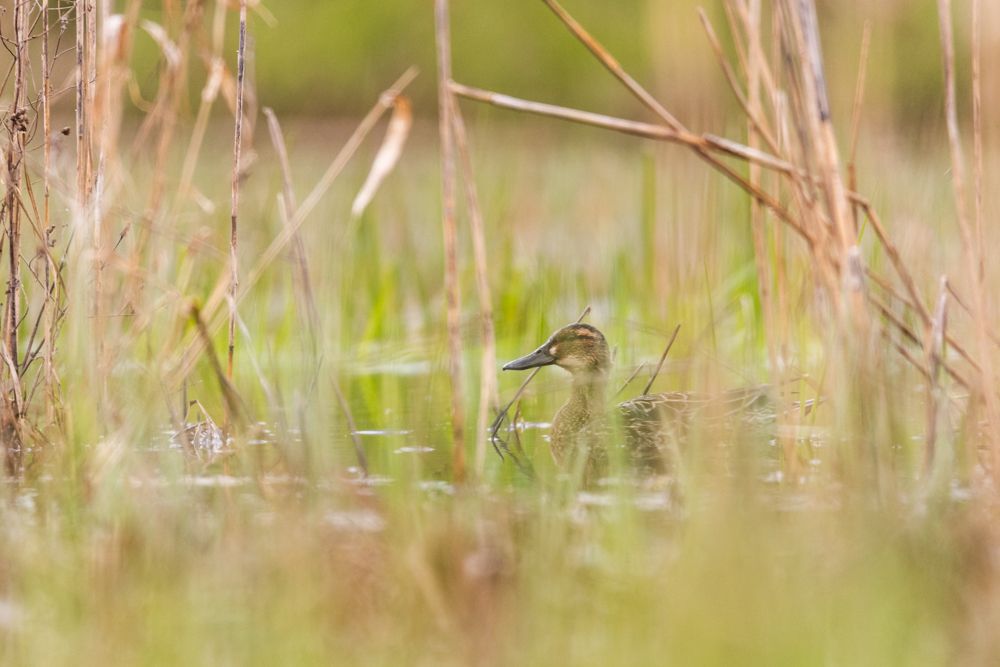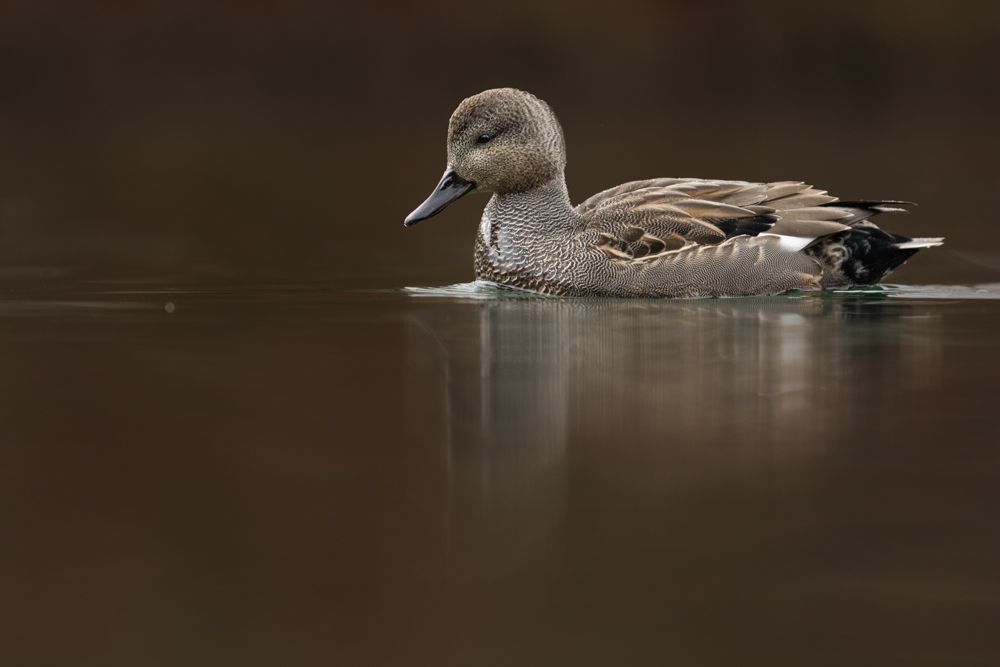Garganey (Anas querquedula)
Profile
Scientific name: Anas querquedula
Class: Birds
Order: Anseriformes
Family: Anatidae
Length: 37-41cm
Wingspan: 60-63cm
Weight: 300-440g
Distribution: Total Palaearctic
Breeding population CH: 0-1 pairs
Habitat: Various lakes, slow-flowing waters
Migration behaviour: Long-distance migrant
Appearance & Identification
The garganey is only slightly larger than the common teal and is therefore the second smallest duck in Europe. In its breeding plumage, the male shows a white overeye stripe which extends down to the neck. Head, neck and chest are patterned and brown. The sides are patterned light grey. They are partly covered by the long shoulder feathers. These are also known as decorative feathers and can be seen on pintails, teals and gadwalls too.
Typical for dabbling ducks, the female is coloured rather inconspicuously,. Compared to other females, however, the garganey shows quite a lot of white. In general, the pattern is slightly more contrasting than the pattern of other female dabbling ducks. In addition, the female shows a rather strong head pattern consisting of a light overeye stripe, dark eye stripe and a light patch at the base of the beak and on the throat.
Risk of confusion
The white over-eye stripe of the male can remind a little bit of the pintail. But the pintail has a white chest. The white band runs from the chest up to the neck. With the garganey, the white band starts in front of the eyes and ends in the neck.
The female garganey is quite difficult to distinguish from other female dabbling ducks. The contrasting plumage and head pattern are the only good features to identify the duck.
Habitat
The garganey inhabits lakes, slow-flowing waters and wetlands. The waters should not be too deep. They should also be rather nutrient-rich and have a lush underwater flora.
On migration, it rests on various, rather shallow waters with lush vegetation but also on flooded meadows and fishing ponds.
Distribution in Switzerland
In Switzerland, the garganey can only be observed when migrating through. Then it can be seen mainly on shallow lake shores with a lot of shore vegetation. Breeding records of the garganey are irregular and rather rare in Switzerland. It is also very rarely seen in winter.
Diet
The garganey feeds mainly on water plants, but it also eats small animals such as small crabs and invertebrates. The food acquisition takes place by dabbling. The duck dives with the head under water. However, it cannot dive with its entire body.
Breeding behaviour
As with all ducks, the female alone takes care of raising the young. The garganey builds its nest well hidden in the shore vegetation. The female lays between 8 and 11 eggs in this nest. After 21 to 23 days, the young hatch. The young are nest escapees and leave the nest shortly after. Under the guidance of the mother they have to search and take in the food themselves. After 35 to 42 days, the young reach flight ability. In general, the garganey behaves very secretive during the breeding season, which is why some broods in Switzerland may have gone unnoticed.
Migration behaviour
The garganey is the only one among the dabbling ducks that spend the winter as long-distance migrants south of the Sahara in the northern tropics. Especially on the migration to the breeding areas the garganey is a frequent guest at our waters. During autumn migration, when the garganey migrates south, it is less frequent on our waters. Some individuals stay in the Mediterranean Sea during winter. Very rarely, there have also been observations of garganeys in Switzerland in winter.
Photographing the garganey
Garganeys rest in Switzerland mostly in the nature reserves. As garganeys are rather shy, getting close enough to the ducks without camouflage is relatively difficult. Because they rest in nature reserves you often cannot even get to the water. In addition, garganeys rest from year to year in other places. Only in a few areas you can regularly observe these ducks every spring (and autumn). For example, the chances of seeing a garganey at the Klingnauer Stausee or at the Inkwilersee are quite high.
Other species
Resources
The population figures, length, weight and wingspan correspond to the data of the Vogelwarte Sempach
Information on behaviour, distribution etc. is based on my own observations and was supplemented with information from the following sources:
The Birds of Switzerland (2007) Lionel Maumary et al.
Swiss Breeding Bird Atlas 2013-2016
The Cosmos Bird Guide (2017) Lars Svensson et al.


